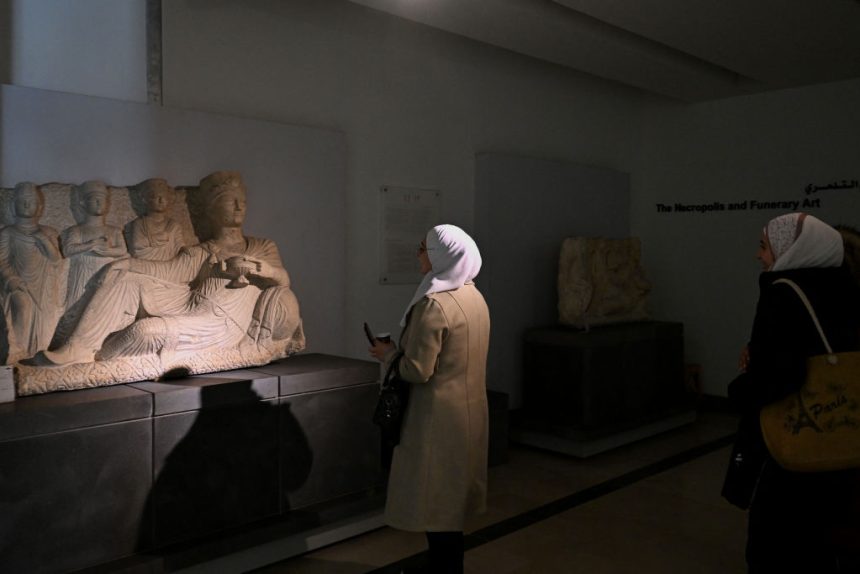Visitors stand in Syria’s National Museum of Damascus on Jan. 8, 2025. Credit – Louai Beshara—Getty Images
Roman-era statues have been stolen from the National Museum of Damascus by thieves, officials said on Tuesday.
The break-in occurred on Sunday night and was uncovered the following morning when a door to the classical department was found smashed, leading to the discovery that the statues were missing.
A total of six marble statues were taken, according to officials who spoke to The Associated Press. An investigation into the museum heist is currently underway and the museum was temporarily closed to allow time for the authorities to properly assess the scene.
TIME has reached out to the National Museum of Damascus, Syria’s directorate-general for antiquities and museums, and the local authorities for further information.
The museum reopened its doors in January after the fall of the Assad regime the previous month, boasting a boosted security system which included new surveillance cameras. While the museum had remained open throughout the majority of the civil war, it briefly shut during the collapse of the Assad government due to concerns over looting, which was reportedly widespread in the Syrian capital during the fraught time.
“Things happened so fast with the fall of the regime. And that created some chaos,” Rima Khawan, chief curator of the National Museum in Damascus, is quoted as telling AP at the museum’s reopening on Jan. 8. “Thank God, we did not suffer any serious damage… there was more fear than damage.”
Over the past year, a black market for “cultural objects” has emerged in Syria, according to the International Council of Museums (ICOM).
Access to treasure-hunting devices is widely available in the country, meaning that “objects found during illegal excavations are publicly advertised for sale on social media,” ICOM warned in June, adding that the production of counterfeit artifacts has been on rise.
Prior to the heist at the Damascus Museum, ICOM had called on “the relevant authorities in Syria and abroad to take decisive action to address this issue.”
Syria has a rich historical culture, dating back to before the Roman era, and is home to six UNESCO world heritage sites. This includes the site of Palmyra, the ruins of a Roman city in central modern-day Syria which was largely destroyed by Islamic State in 2015 during its capture of significant areas of the country.
Damascus itself is listed as a UNESCO site. The Syrian capital is one of the oldest cities in the world and home to an estimated 125 monuments constructed over 5,000 years.
“Syrian heritage has faced numerous acts of vandalism, destruction, encroachments, theft of archaeological artifacts, and the degradation of archaeological layers at various sites,” said the directorate-general for antiquities and museums in January, shortly after the National Museum in Damascus reopened.
The heist at the Syrian landmark comes three weeks after thieves pulled off a high-profile robbery at the Louvre Museum in Paris, fleeing with jewels worth over $100 million.
Under the glare of the world, and facing questions as to how such a heist could be pulled off at the home of the Mona Lisa, the Paris prosecutor’s office has been working the case avidly, and several people have been charged in connection with the heist. The authorities have yet to recover the jewels.
Contact us at letters@time.com.









